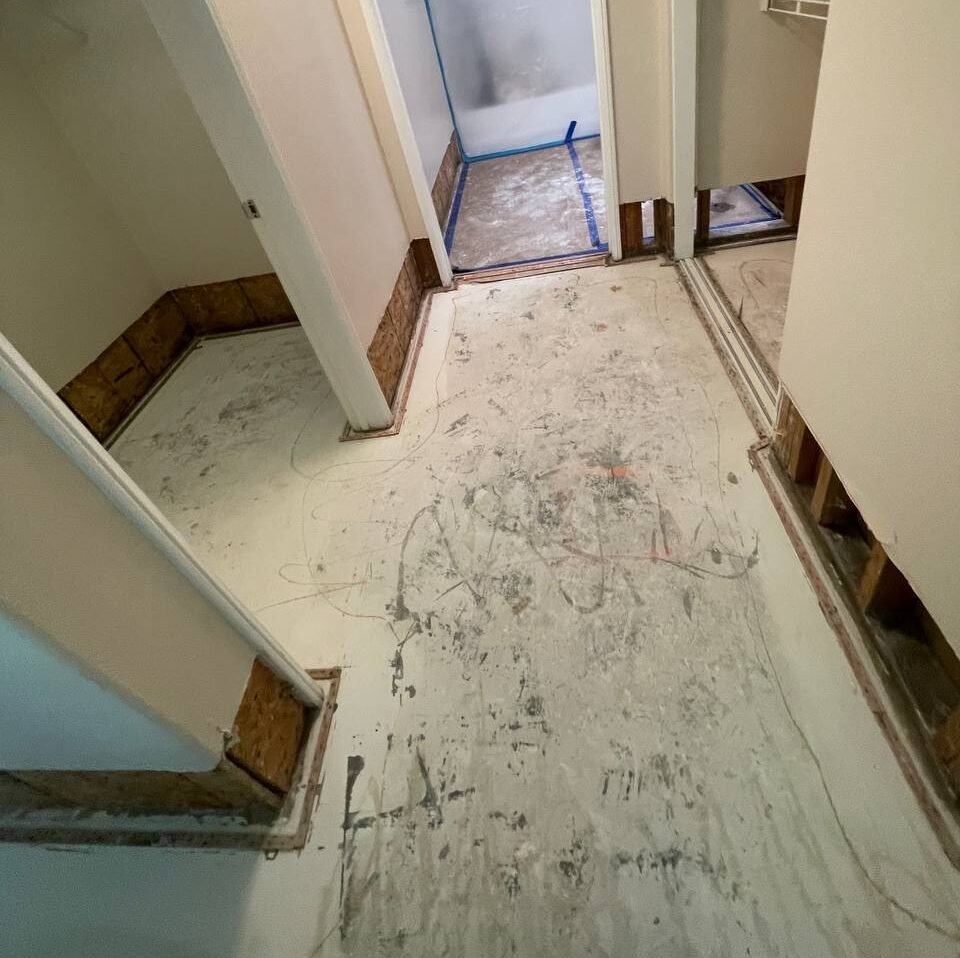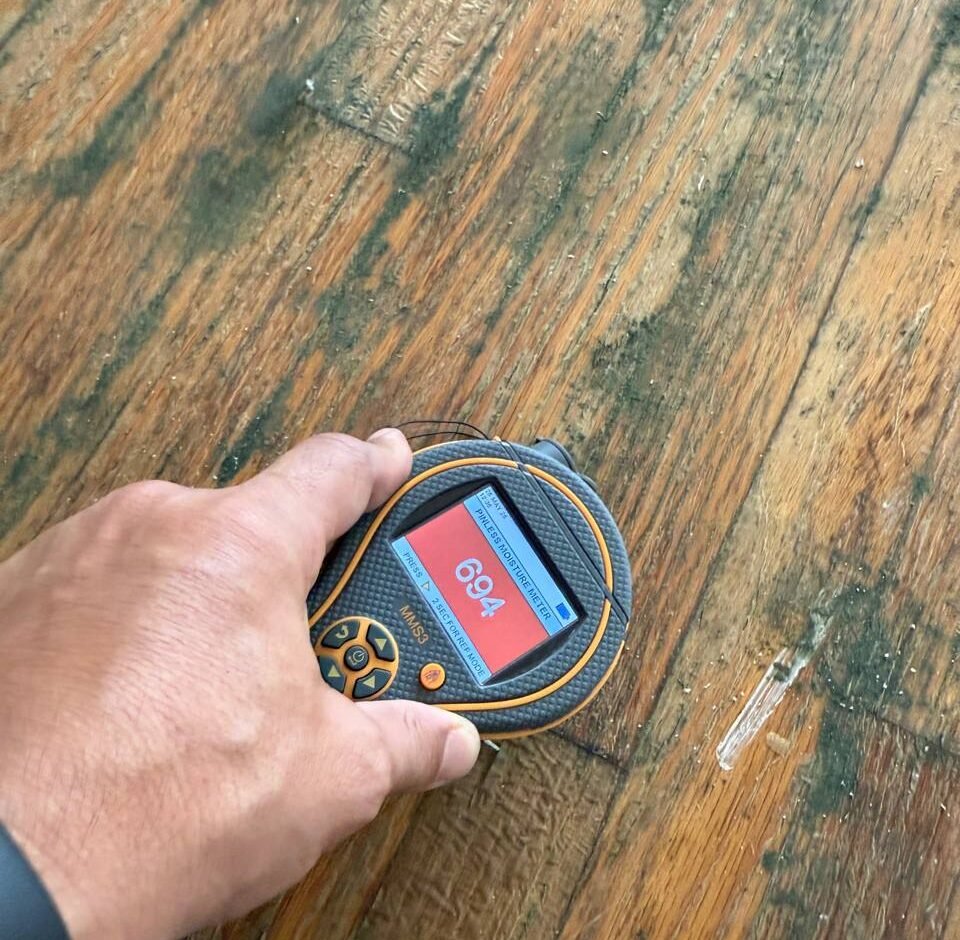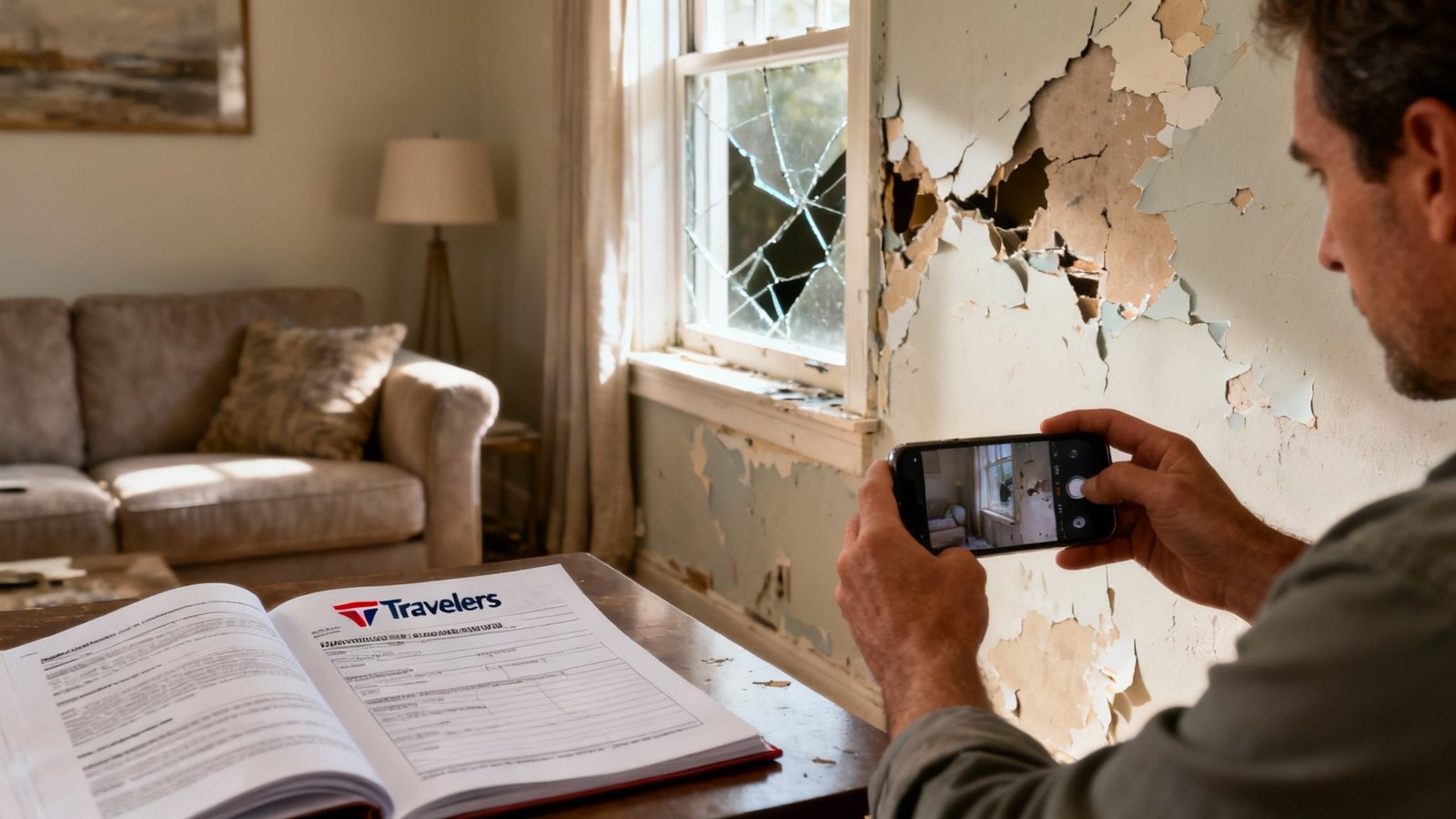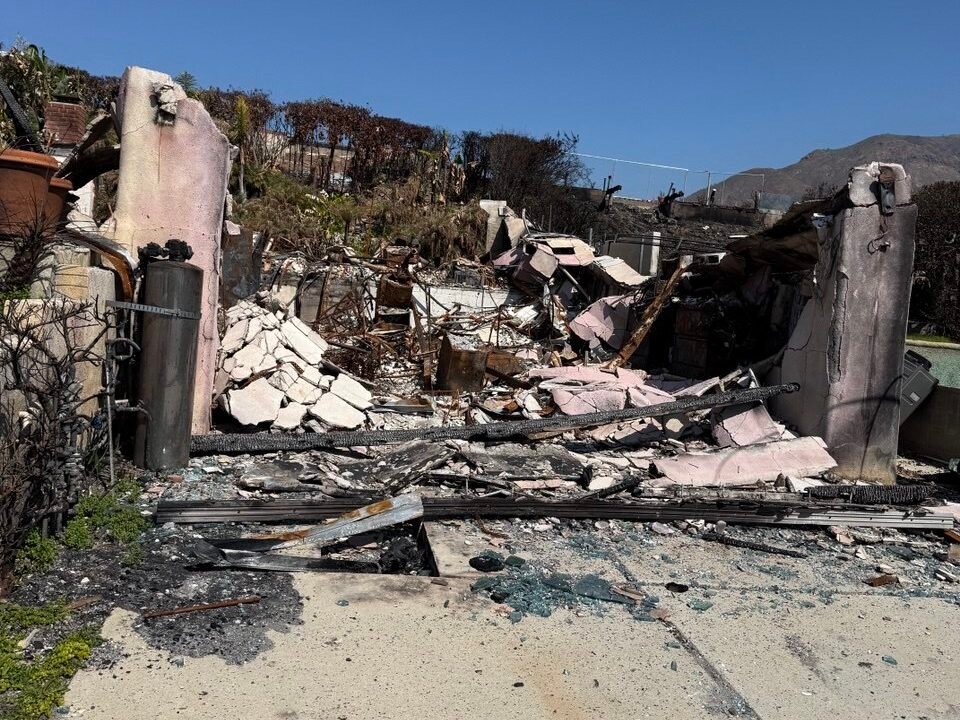Get Started
Service Form
When you invest in a homeowners policy from Travelers Insurance, you’re not just buying a document. You are securing a crucial financial safety net designed to protect your most significant asset—your home. This coverage is essential for rebuilding after a disaster, whether it’s a sudden fire, a major storm, or an unexpected lawsuit. A Travelers insurance homeowners policy is the company’s promise to help you put your life back together when things go wrong.
Has your home been affected by water, fire, or mold? Don’t wait for the damage to worsen. Onsite Pro Restoration offers 24/7 emergency services. Contact us now for a free, no-obligation assessment.
What Is a Travelers Insurance Homeowners Policy?
Think of your home as a massive investment. A Travelers insurance homeowners policy is the structured plan built to guard that investment against all sorts of risks. It’s designed to provide financial help if your house or your stuff inside gets damaged, or if someone gets hurt on your property and decides to sue.
Travelers is a big name in the insurance game for a reason. They hold a solid market share of about 3.9% in the U.S. property and casualty sector, which makes them one of the top homeowners insurance carriers out there. That kind of presence is built on years of financial stability and a nationwide reach.
At its heart, any good homeowners policy is broken down into a few key areas of protection. This makes sure you’re covered from different angles. This infographic gives a great visual of how a typical Travelers policy is structured.
As you can see, it really comes down to three core pillars: protecting the building itself (your dwelling), your belongings (personal property), and your financial assets from lawsuits (liability).
Getting a handle on these components is the first step. If you’re new to this, a general guide on how to read an insurance policy can be a huge help. To see exactly how Travelers handles specific events like fires or water damage, check out our deep dive into Travelers damage insurance.
Now, let’s break down each of those core protections.
Decoding Your Core Coverage Protections
Your Travelers insurance homeowners policy is really built around six core protections, each one designed to do a very specific job. Think of them as different layers of defense for your house, your belongings, and—most importantly—your finances.
While this six-part structure is pretty much the industry standard, it’s crucial to understand exactly what Travelers covers under each part. Knowing where your protection starts and stops is the key to feeling secure. Let’s break them down into two main groups: the coverages that protect your physical stuff and the ones that shield you from financial liability.
Your Home and Belongings
First up are the coverages that kick in when your physical property gets damaged. This includes the house itself and everything you own inside of it.
Coverage A (Dwelling): This is the big one. It’s the protection for the structure of your house—the walls, the roof, the foundation, and anything permanently attached to it, like a deck. If a hailstorm wrecks your roof, this is the part of the policy that pays to fix it.
Coverage B (Other Structures): This coverage extends to the structures on your property that aren’t attached to the main house. We’re talking about things like a detached garage, a tool shed in the backyard, or even your fence.
Coverage C (Personal Property): Think of this as the shield for everything inside your home. It covers your belongings—furniture, electronics, clothes, you name it—if they’re damaged or stolen. This is especially critical when dealing with something like a burst pipe, as water can ruin personal property fast. You can dive deeper into homeowners insurance coverage for water damage to see just how these scenarios play out.
Coverage D (Loss of Use): This is your safety net. If a covered event like a kitchen fire makes your home unlivable, “Loss of Use” helps pay for the additional living expenses you rack up while repairs are underway. This could be anything from a hotel stay to a short-term rental.

Standard Travelers Homeowners Policy Coverage Breakdown
| Coverage Type (Letter) | What It Protects | Example Scenario |
|---|---|---|
| A – Dwelling | The physical structure of your house | A tree falls and damages your roof during a storm. |
| B – Other Structures | Detached structures like garages or sheds | Your detached garage is damaged in a fire. |
| C – Personal Property | Your belongings inside the home | Your laptop and TV are stolen during a break-in. |
| D – Loss of Use | Extra living costs if your home is unlivable | You need to stay in a hotel while your home is repaired after a fire. |
| E – Personal Liability | Financial protection from lawsuits for injury/damage | A visitor slips on your icy walkway, breaks their leg, and sues you. |
| F – Medical Payments | Medical bills for guests injured on your property | A friend cuts their hand in your kitchen and needs stitches. |
This table helps put the pieces together, but the next section on liability is where your policy really protects your long-term financial health.

Your Financial and Legal Shield
Next, we have the liability coverages. These act as your financial bodyguards, stepping in to protect your assets if you’re held responsible for an accident.
Liability protection is arguably one of the most critical parts of a homeowners policy. A single lawsuit could jeopardize your financial future far more than the cost to repair property damage.
Coverage E (Personal Liability): This is your shield against lawsuits. If someone gets hurt on your property and you’re found legally responsible, this coverage helps pay for your legal defense and any damages awarded, up to your policy limit.
Coverage F (Medical Payments to Others): This is a smaller, “goodwill” coverage. It helps pay for minor medical expenses if a guest is injured on your property, no matter who was at fault. The idea is to quickly resolve small incidents and hopefully avoid a bigger legal fight.
Getting Familiar with Common Policy Exclusions
Knowing what your homeowners policy covers is half the battle. The other half—and arguably the more important part—is understanding what it doesn’t cover. These built-in limitations, known as exclusions, are in every standard Travelers insurance homeowners policy to prevent nasty surprises when you file a claim.
These exclusions aren’t just a Travelers thing; they’re pretty much standard across the entire insurance industry. They exist because certain risks are so massive or widespread that they need their own specialized insurance. By drawing these lines in the sand, insurers can keep standard home policies from becoming outrageously expensive for everyone.
High-Risk Events That Aren't Covered
Some disasters are so catastrophic and concentrated that they simply fall outside the scope of a standard policy. Think of these as needing their own dedicated safety net.
Here’s a quick rundown of the big ones:
- Flood Damage: This is a major one. Whether the water comes from a hurricane storm surge or an overflowing river, damage from ground-level flooding is not covered. For that, you’ll need a separate flood insurance policy, which is often managed through the National Flood Insurance Program (NFIP).
- Earthquakes: Any damage from the earth moving—tremors, landslides, sinkholes, you name it—is a standard exclusion. If you’re in an area prone to seismic activity, you absolutely need to look into a separate earthquake policy or add-on endorsement.
- Pest Infestations: Damage from termites, mice, or other pests is considered a home maintenance problem, not a sudden and accidental event that insurance is designed for. Regular pest control is on you.
- Neglect or Wear and Tear: Your policy is there for unexpected disasters, not for problems that crop up because of poor upkeep or because parts of your home are just getting old. A leaky roof that’s been dripping for months isn’t covered.
- Intentional Acts: It probably goes without saying, but if you or someone in your household damages your property on purpose, your policy won’t pay for the repairs.
How to Customize Your Travelers Homeowners Policy with Endorsements
A standard Travelers insurance homeowners policy gives you a solid starting point, but let’s be honest—your life isn’t standard. This is where endorsements come into play.
Think of an endorsement as an upgrade or add-on for your base policy. It’s designed to patch specific coverage holes that could otherwise leave you with a massive bill after a claim. Because no two homes are identical, Travelers offers a whole menu of these riders so you can build a policy that actually fits your needs, not just a generic template.
Popular Endorsements to Consider
The key to choosing the right endorsements is to take a hard look at your own risks. While Travelers has plenty of options, a few stand out because they solve some of the most common—and expensive—problems homeowners face today.
Here are three crucial endorsements worth asking about:
Scheduled Personal Property: Your base policy puts a cap on what it will pay for high-value items like jewelry, art, or firearms. Imagine your $10,000 engagement ring is stolen, but your policy limit for jewelry is only $1,500. You’re out $8,500. This endorsement “schedules” (or lists) your specific valuables at their appraised value, making sure you get their full worth back.
Water Backup and Sump Pump Overflow: This is a big one, and it’s an absolute must-have for many homeowners. Standard policies almost never cover damage from a sewer line backing up into your basement or a sump pump giving out during a storm. This add-on covers the disgusting cleanup, the necessary repairs, and the cost of replacing whatever was ruined.
Identity Fraud Expense Coverage: Identity theft is more than just a headache; it’s expensive to fix. This endorsement helps you get back on your feet by covering costs like lawyer fees, wages you lost while taking time off work to sort things out, and fees for refiling loan applications.
These add-ons aren’t just fluff. They are strategic tools for managing your financial risk, closing the gap between what a standard policy covers and what you actually need.
While Travelers has its own set of unique offerings, it’s always smart to see how other insurers handle things. For a different perspective, check out our guide on a Progressive insurance homeowners policy. Taking the time to select the right endorsements can turn a generic policy into protection that feels like it was made just for you.
Estimating Your Travelers Homeowners Policy Cost
Trying to pin down the exact cost of a Travelers insurance homeowners policy is a bit like predicting the weather—there’s a science to it, but a lot of variables come into play. Insurers don’t pull a number out of thin air; they carefully assess your home’s unique risk profile. Your final premium is a direct reflection of that assessment.
Think about it this way: a home in a hurricane-prone area will naturally cost more to insure than one in a milder climate. The same goes for your home’s age and the materials used to build it. A modern, fire-resistant roof presents less risk than an older one, and that difference shows up in your quote.
Key Factors Influencing Your Premium
Beyond your home’s physical stats, your own history and the coverage choices you make are just as crucial. These three elements heavily influence what you’ll pay:
- Your Claims History: If you’ve filed several claims in the past, an insurer might see that as a pattern of higher risk, which could nudge your premiums up.
- Your Chosen Deductible: This is your share of the cost after a loss. Agreeing to a higher deductible means you’ll pay more out-of-pocket, but it usually lowers your annual premium. It’s a trade-off between short-term savings and long-term risk.
- Dwelling Coverage Amount: This is the big one. It’s the amount needed to completely rebuild your home from the ground up. The higher the rebuild cost, the higher your premium will be.
The link between coverage and cost is pretty straightforward. Below is a quick look at what you can expect to pay on average for a Travelers policy based on different dwelling coverage amounts.
Average Annual Premiums for Travelers Homeowners Insurance
This data shows the average yearly cost for a Travelers homeowners policy based on the amount of dwelling coverage selected.
| Dwelling Coverage Amount | Average Annual Premium |
|---|---|
| $200,000 | $1,644 |
| $300,000 | $2,213 |
| $500,000 | $3,308 |
As you can see, the premium scales directly with the level of protection you choose. More coverage means a higher cost, but it also means more security if the worst happens.
Understanding these variables helps you get a clearer picture of your potential costs. It’s also smart to know how post-disaster expenses are calculated, since that can influence how much coverage you really need. For a deep dive into those numbers, check out our guide on the average water damage cleanup cost.

Navigating The Travelers Claims Process Step by Step
Dealing with damage to your home is always stressful. The last thing you want is a complicated claims process on top of it all. Fortunately, filing a claim with your Travelers insurance homeowners policy is designed to be a straightforward path to getting things back to normal.
Knowing exactly what to do right after you discover damage makes a huge difference. Acting quickly and correctly can get you on the road to recovery much faster. As soon as you find the damage, your priorities are simple: safety first, then documentation. Make sure everyone is out of harm’s way. Then, do what you can to prevent things from getting worse—like throwing a tarp over a hole in the roof. Before you move or clean up a single thing, take plenty of photos and videos. This evidence is crucial.
Filing and Managing Your Claim
With the immediate chaos under control, it’s time to get the official process started with Travelers. They make it pretty easy to get the ball rolling.
- Online: You can head to the Travelers website or log into your MyTravelers® account for a guided, step-by-step submission.
- By Phone: If you’d rather talk to a person, their 24/7 claims line is always available.
- Mobile App: The Travelers Mobile app lets you file and track the whole thing right from your smartphone.
Once you file, Travelers will assign a claims professional to your case. This person is your go-to contact. They’ll review your policy, come out to assess the damage (or arrange a virtual inspection), and walk you through what your coverage includes. They’re there to guide you through the settlement from start to finish. If you want a better idea of what to expect day by day, check out our guide on the typical insurance claim timeline.
It helps to know you’re working with a stable company. Travelers’ recent net written premiums hit $11.5 billion, which is a strong indicator they have the financial muscle to handle claims efficiently. That kind of stability provides real peace of mind. Still, it never hurts to be prepared, so it’s smart to understand the top insurance claim denial reasons to avoid any bumps in the road.


